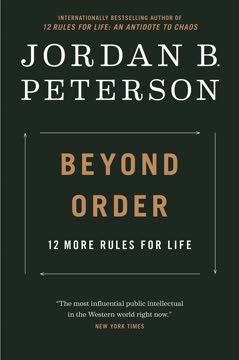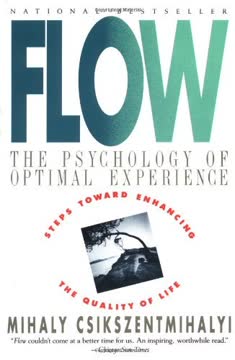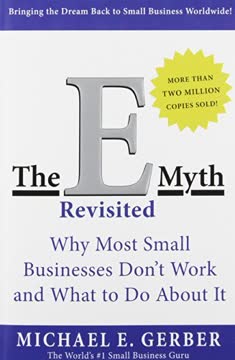Key Takeaways
1. The Hidden Potential in All Things: Understanding Emptiness
Nothing is random, nothing is accident, and we have no one outside ourselves to blame for our own world.
Emptiness is potential. This concept, central to The Diamond Cutter, doesn't mean nothingness. Instead, it refers to the idea that nothing has an inherent nature of its own. Everything we experience - people, objects, events - is neutral until our perception gives it meaning.
This neutrality is opportunity. Because things are empty of inherent nature, they have unlimited potential to become anything. This applies to:
- Business situations: A "problem" can become an opportunity
- Relationships: A difficult person can become an ally
- Personal growth: Our own limitations can become strengths
Understanding emptiness allows us to see the world as a blank canvas, ready for us to paint our reality through our actions and perceptions.
2. Mental Imprints: The Source of Your Reality
Everything we experience is triggered by a previous imprint: Nothing around us—not people or things or events themselves, nor even our own thoughts—occurs without the cause of an imprint in our own mind coming up to our consciousness and making us perceive it.
Imprints shape our world. Every action, word, or thought creates an imprint in our mind. These imprints determine how we perceive and experience reality. They are like seeds that, once planted, grow and eventually bear fruit in the form of our experiences.
Key aspects of mental imprints:
- They are created by our actions towards others
- Their strength depends on factors like intention and emotion
- They grow exponentially over time
- They must eventually ripen into an experience
Understanding mental imprints gives us unprecedented control over our reality. By consciously planting positive imprints through kind and ethical actions, we can create a more positive future for ourselves and others.
3. Giving Without Staying: The Economics of Limitlessness
The amount of wealth around is not a fixed thing, and never has been. It fluctuates.
Generosity creates abundance. The Diamond Cutter challenges traditional economic thinking by proposing that wealth is not a zero-sum game. Instead, by giving freely and helping others succeed, we plant the seeds for our own success and prosperity.
This principle operates on multiple levels:
- Personal: Helping others in their careers can lead to our own advancement
- Business: Supporting suppliers and customers can lead to increased profits
- Global: Acts of generosity can expand the total wealth in the world
The key is to give without attachment to results, or "without staying" in the act of giving. This creates powerful imprints that lead to future abundance.
4. The Six-Time Book: A Tool for Conscious Living
To use this ancient wisdom to head off even a single instance of anger, then all the effort you've put into understanding the ideas in this book has more than paid off.
Constant vigilance transforms. The Six-Time Book is a practical tool for implementing The Diamond Cutter's principles in daily life. It involves making regular entries throughout the day to track our thoughts, actions, and their potential imprints.
How to use the Six-Time Book:
- Choose 3 key areas for improvement
- Make entries 6 times daily
- For each entry, note:
- A positive action (+)
- A negative action (-)
- A "to-do" for improvement
By consistently using this tool, we become more aware of our actions and their potential consequences, allowing us to consciously shape our future reality.
5. Setting the Day: The Power of Silent Time
To hear these great ideas whispered into your mind while you're in the Circle, it's essential that you be silent.
Silence cultivates clarity. The practice of "Setting the Day" involves dedicating time each morning for silent reflection and meditation. This quiet time allows us to tap into our inner wisdom and set positive intentions for the day ahead.
Key elements of Setting the Day:
- Choose a consistent time and place
- Begin with focused breathing
- Reflect on your goals and challenges
- Visualize your ideal self and day
Regular practice of Setting the Day can lead to increased clarity, creativity, and effectiveness in both personal and professional life.
6. Turning Problems into Opportunities: The Emptiness of Problems
Every existing object in the world is empty. This means that no object in the world is good or bad from its own side; one man's meat is another man's poison.
Problems are perceptions. The Diamond Cutter teaches that problems, like everything else, are empty of inherent nature. They only become "problems" because of how we perceive them. By understanding this, we can transform any challenge into an opportunity.
Steps to turn problems into opportunities:
- Recognize the emptiness of the situation
- Identify the mental imprints causing your perception
- Choose a more beneficial perspective
- Take action based on this new viewpoint
This approach not only solves immediate issues but also plants positive imprints for future success.
7. Exchanging Self and Others: The Ultimate Management Tool
The Jampa Method is, in short, learning to be very observant of what others need and like. This is so you can give them what they want the most.
Empathy drives success. The practice of "exchanging self and others" involves putting ourselves in others' shoes and treating their needs as our own. This powerful management tool leads to increased cooperation, loyalty, and overall success.
Three levels of exchanging self and others:
- The Jampa Method: Observing and fulfilling others' needs
- Switching Bodies: Imagining yourself as the other person
- The Rope Trick: Seeing yourself and others as one entity
By mastering these levels, leaders can create harmonious, highly effective teams and organizations.
8. The Circle: Working for the Long Term
To do the Forest Circle you have to find a place that's totally alone and quiet.
Retreat refreshes vision. The Circle is a practice of periodically stepping away from daily work to gain perspective and insight. It comes in two forms:
- Weekly Circle: A day each week for reflection and personal growth
- Forest Circle: An extended retreat (e.g., two weeks) for deep insight and planning
Benefits of practicing the Circle:
- Increased creativity and problem-solving ability
- Better long-term decision-making
- Improved work-life balance
- Greater sense of purpose and meaning in work
Regular practice of the Circle can lead to sustained success and fulfillment in both business and personal life.
9. Looking Back: Ensuring Your Life Had Meaning
To be really successful you must learn to overcome ways of thinking and behaving that have proved themselves, over decades of your life, to be either counterproductive or—at best—almost random in producing the results you want.
Purpose transcends profit. The Diamond Cutter emphasizes the importance of looking back on our lives and careers with satisfaction, knowing that our efforts had real meaning beyond just financial success.
Elements of a meaningful life and career:
- Helping others achieve their goals
- Contributing to the greater good
- Personal growth and self-improvement
- Leaving a positive legacy
By applying the principles of The Diamond Cutter, we can create success that is not only financially rewarding but also deeply fulfilling on a personal and societal level.
Last updated:
FAQ
What's The Diamond Cutter about?
- Integration of Buddhism and Business: The Diamond Cutter by Michael Roach combines ancient Buddhist wisdom with modern business strategies, focusing on how spiritual principles can enhance both personal and professional success.
- Three Business Goals: The book outlines three main goals: making money, enjoying it, and finding meaningfulness in work, all tied to Buddhist teachings.
- Concept of Emptiness: Central to the book is the idea of "hidden potential" or "emptiness," suggesting that perceptions shape our experiences and outcomes.
Why should I read The Diamond Cutter?
- Unique Perspective: It offers a blend of spirituality and practical business strategies, appealing to those seeking ethical integrity in business.
- Real-Life Applications: The author shares personal experiences from the diamond industry, making the teachings relatable and actionable.
- Transformative Insights: Readers can gain insights into how thoughts and actions shape reality, improving relationships and business outcomes.
What are the key takeaways of The Diamond Cutter?
- Generosity Leads to Success: A generous mindset is crucial for financial success, as sharing profits creates positive mental imprints.
- Emptiness and Perception: Situations are neutral, and our perceptions shape experiences, helping navigate challenges effectively.
- Mindful Imprints: Actions, words, and thoughts create mental imprints influencing future experiences, guiding better decision-making.
What is the significance of "hidden potential" in The Diamond Cutter?
- Understanding Emptiness: "Hidden potential" aligns with the Buddhist concept of emptiness, teaching that nothing has inherent qualities.
- Influencing Outcomes: Recognizing hidden potential allows individuals to shift perceptions and influence outcomes positively.
- Practical Application: The book provides methods to harness this potential, encouraging a mindset that sees opportunities over obstacles.
How does The Diamond Cutter define success?
- Ethical Financial Prosperity: Success is not just financial gain but achieving it through ethical means, aligning with spiritual values.
- Personal Fulfillment: True success involves enjoying wealth while maintaining health and well-being.
- Meaningful Impact: Success is about feeling that one’s work has positively impacted the world, reflecting Buddhist principles.
What is the "Six-Time Book" method in The Diamond Cutter?
- Tracking Actions and Thoughts: This journaling method involves making entries every two hours to reflect on positive and negative actions.
- Specificity is Key: Entries should be specific, focusing on particular instances of behavior to recognize patterns.
- Daily Review: At day's end, individuals review entries to reinforce positive behavior and encourage personal growth.
How can I apply the teachings of The Diamond Cutter in my daily life?
- Practice Generosity: Incorporate small acts of generosity into daily routines, creating positive imprints.
- Reflect on Actions: Regularly reflect on actions and their impacts, aligning decisions with values.
- Embrace Challenges: View challenges as opportunities to practice principles of emptiness and hidden potential.
What is the "Setting the Day" practice mentioned in The Diamond Cutter?
- Morning Reflection: Spend quiet time each morning to mentally prepare for the day, focusing thoughts and intentions.
- Visualization of Challenges: Visualize potential challenges and mentally rehearse handling them effectively.
- Creating a Sacred Space: Establish a dedicated, quiet space for this practice, enhancing reflection and visualization.
What does The Diamond Cutter say about the importance of generosity?
- Generosity as Wealth Source: True wealth results from generosity, encouraging an abundance mindset.
- Planting Positive Imprints: Acts of generosity create positive imprints, manifesting as opportunities and success.
- Building Relationships: Generosity fosters goodwill, strengthening personal and professional relationships.
How does The Diamond Cutter address common business problems?
- Identifying Solutions: Links solutions to principles of mental imprints and hidden potential, understanding root causes.
- Practical Examples: Illustrates solutions with examples from the diamond industry, making teachings relatable.
- Encouraging Reflection: Empowers readers to reflect on situations and apply principles to find solutions.
What are some of the best quotes from The Diamond Cutter and what do they mean?
- “The more you give, the more you receive.”: Highlights the relationship between generosity and wealth, suggesting helping others creates success.
- “Every experience we undergo is triggered by a previous imprint.”: Emphasizes mental imprints, indicating past actions influence current experiences.
- “If I were going to die tonight, is this the way I would spend my last day?”: Encourages evaluating priorities and actions, focusing on meaningful living.
How does The Diamond Cutter address the concept of impermanence?
- Understanding Change: Emphasizes all things are impermanent, encouraging embracing change with adaptability.
- Reflection on Life's Transience: Prompts consideration of actions and relationships, fostering appreciation for the present.
- Motivation for Meaningful Living: Recognizing impermanence motivates pursuing meaningful goals and relationships, leading to fulfillment.
Review Summary
The Diamond Cutter receives mixed reviews. Some praise its application of Buddhist principles to business, finding it insightful and transformative. Others criticize it as oversimplified, contradictory, or misrepresenting Buddhist concepts. Many readers appreciate the practical advice and personal growth aspects, while some find the writing style difficult or the diamond industry focus distracting. Critics argue that the book's core ideas about karma and imprints are flawed or potentially harmful. Overall, readers tend to either strongly embrace or reject the book's teachings.
Similar Books









Download PDF
Download EPUB
.epub digital book format is ideal for reading ebooks on phones, tablets, and e-readers.




